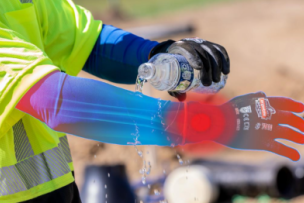MCR Safety has over forty years of experience as a leader in the field of personal protective equipment (PPE). Our assortment of offerings includes gloves, glasses, and garments which are made from the highest quality materials available to ensure maximum safety, comfort, and style.
People may hear about ultraviolet (UV) light and UV rays from dermatologists and eye doctors. Still, in reality, the general public may not understand the intricate ins and outs of this kind of light—or the workplace hazards ultraviolet radiation can present.
UV light and radiation are naturally present in sunlight but can also be artificially produced by products like arc welders, mercury-vapor lamps, tanning lamps, and backlights.
MCR Safety understands the value of education regarding ultraviolet light and radiation and the importance of wearing protective gear to avoid the risks of exposure to it. Certain occupations place individuals at a higher risk for damage from UV radiation, and protective gear can help limit exposure and associated risks. This article will take an in-depth look at ultraviolet light, the risks that accompany exposure to ultraviolet rays, and how to stay protected from harmful UV rays—especially in the workplace.
Ultraviolet Light Definition
What is ultraviolet light? It's a kind of electromagnetic radiation that emanates from the sun, and it represents 10% of all the sun’s radiation. Ultraviolet technically means “beyond violet,” with violet representing the highest frequency of visible light. Ultraviolet light is what makes blacklight posters glow and also what gives people their summer tans and sunburns.
As MCR highlights in their article A Break Down of Blue Light Glasses, electromagnetic radiation, or UV light, is transmitted in waves or particles. It travels at different wavelengths and frequencies, known as the electromagnetic (EM) spectrum. This spectrum is broken up into seven segments, established in order of decreasing wavelength and increasing frequency, and is shown below.









Talk to Us!
Leave a reply
Your email address will not be published. Required fields are marked *